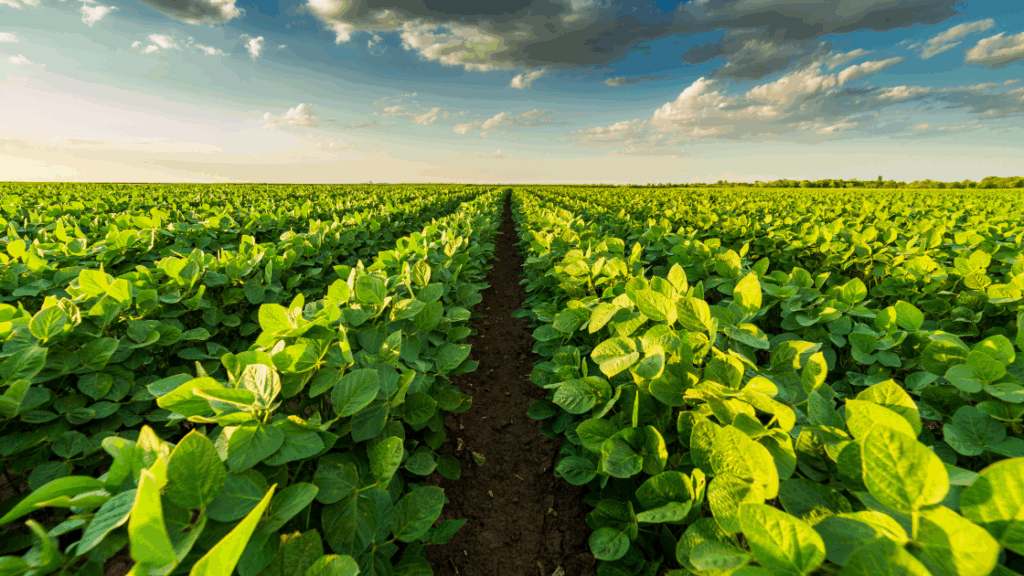Harvesting Growth: The Rise of Interfarm NV and Its Investment Potential in Suriname’s Agro-Economy
Executive Summary Interfarm NV is at the forefront of Suriname’s agricultural transformation, spearheading a high-growth model that blends innovation, sustainability, and inclusive development. With robust year-on-year revenue increases, strong export momentum, and scalable business models, Interfarm NV represents a strategic investment opportunity in an underserved yet fertile region. This white paper details the company’s trajectory, market performance, and untapped potential while offering compelling reasons for investor participation. 1. Introduction: A New Chapter for Suriname’s Economy Suriname’s economy, long reliant on extractive industries such as gold and bauxite, faces volatility due to global commodity price fluctuations. In contrast, the agricultural sector offers long-term growth potential, food security, and job creation. Interfarm NV has become the vanguard of this shift. Over the past decade, the company has emerged as a cornerstone of Suriname’s non-oil economic future, targeting both domestic consumption and international markets. 2. Company Profile: Interfarm NV Foundation and Strategic Vision Launched in 2012, Interfarm NV was founded by a group of agribusiness experts and international investors with a $5 million seed investment. The goal was clear: modernize Suriname’s agriculture through scalable, tech-enabled, and climate-smart farming. Key Business Units Crop Production: 7,000 hectares under cultivation, including rice (3,000 ha), cassava (2,000 ha), and vegetables (2,000 ha) Agro-Processing: Facilities for cassava flour, frozen plantains, and vacuum-packed vegetables Export Division: Serving clients in the EU, CARICOM, and North America Agricultural Services: Training and input support for 1,200+ partner farmers Technology Integration Interfarm applies GPS-enabled tractors, drone surveillance, satellite imagery, and AI-based yield prediction models to boost productivity by 38% on average. 3. Financial Performance and Economic Impact Revenue Growth 2020: $6.2M 2021: $8.9M 2022: $12.7M 2023: $16.4M (Projected 2024: $20M+) Export Earnings Export activities account for 72% of total revenue, with cassava derivatives leading at $7.1M. Other major export commodities include frozen plantains ($3.5M) and fresh vegetables ($2.7M). Employment and Livelihoods Direct jobs created: 1,200 (full-time) Indirect employment: 5,600 (logistics, partner farms, distribution) 48% of employees are women; 22% are under 30 years old GDP Contribution Interfarm NV has added an average of 1.5% to Suriname’s agricultural GDP annually since 2018, helping stabilize the rural economy and attract FDI. 4. Social Impact and Rural Inclusion Empowering Smallholders Interfarm’s outgrower program includes 800+ smallholder farmers who are trained in modern practices, given subsidized inputs, and guaranteed offtake. Average yields among these farmers have increased by 40%, and incomes have doubled over five years. Women and Youth Empowerment Interfarm allocates $300,000 annually to youth innovation programs and women’s agri-entrepreneurship hubs. Over 500 young people have been trained in agritech since 2021. Infrastructure Investments 40 km of feeder roads rehabilitated 6 solar-powered storage facilities constructed 10 new water reservoirs benefiting over 3,000 rural families 5. Environmental and Climate Strategy Green Credentials 75% of water needs met through rainwater harvesting Transition to 100% solar-powered irrigation by 2026 Zero synthetic fertilizer zones: 2,200 ha under organic practices Climate Resilience Through collaboration with Wageningen University and FAO, Interfarm has developed drought-resistant cassava varieties and disease-resistant rice hybrids, reducing crop losses by 28%. 6. Strategic Partnerships and Scaling Potential Government Engagement $1.8M in subsidies secured under Suriname’s Agricultural Innovation Fund Joint land titling and farmer registration drive benefiting 1,500+ participants Development Finance Institutions (DFIs) $4.5M concessional funding from IFAD and IDB Technical assistance from FAO on climate-smart agriculture Private Sector Linkages Technology: Partnerships with IBM AgriChain, CropIn, and Trimble Financial Services: Mobile credit disbursal with MobiCash; Crop insurance pilot with SwissRe 7. Risk Mitigation Strategy Land Tenure and Legal Reform Interfarm’s legal support program has resolved 780 land disputes and enabled title transfers worth $2.1M in productive land. Weather Insurance and Crop Diversification Through a $500,000 insurance facility and rotation across 14 crop types, Interfarm has built strong buffers against droughts and floods. Price Stability Mechanisms Forward contracts signed with five major Caribbean buyers Commodity futures pegged to regional food indices 8. Investment Opportunity and Use of Funds Capital Sought: $10 Million Use of Funds $4M for expanding cultivated land by 3,000 ha $2.5M for additional agro-processing plant with EU-grade certification $1.5M for R&D and climate tech integration $2M for working capital and export logistics Investor Benefits Target IRR: 18% over 5 years Equity stake in fastest-growing agribusiness in CARICOM Social impact metrics aligned with ESG frameworks Strategic exit via acquisition or regional IPO (planned for 2028) 9. Future Roadmap 2025-2027 Goals Expand into aquaculture and integrated agroforestry Launch blockchain-based traceability for exports Triple farmer outreach from 800 to 2,500 Double processing capacity to 30,000 metric tons annually 2028 Vision Interfarm aims to become the leading agricultural exporter in the Caribbean basin and serve as a model for sustainable, scalable agribusiness. 10. Policy Recommendations Public-Private Partnership Strengthening Incentives like tax holidays, subsidized credit, and simplified permitting will attract more agribusiness investments. Rural Infrastructure Prioritization Cold storage, feeder roads, and logistics hubs should be co-funded with private sector partners. Investing in Agri-Tech and Innovation Hubs Government co-investment in technology parks and R&D labs will accelerate innovation. Conclusion: A Growing Opportunity with a Strategic Alliance Interfarm NV exemplifies how high-impact investments in agriculture can generate robust returns, drive inclusive development, and build climate resilience. As Suriname accelerates its transition toward a diversified, export-driven economy, Interfarm NV stands out as a growth vehicle ready for scale. To further unlock this potential, Interfarm NV has joined forces with Bottom Billion Corporation—a global impact-focused venture builder that empowers frontier markets through sustainable investment and infrastructure. This partnership enhances Interfarm’s operational excellence, opens access to cutting-edge agri-tech ecosystems, and ensures alignment with global ESG investment standards. Partner with Bottom Billion Corporation Now is the time for visionary investors to join Bottom Billion Corporation in scaling this transformational agri-economy blueprint across Suriname and the region. To explore co-investment opportunities, access detailed financial models, or schedule a strategic session: Visit www.bottombillioncorp.com and send us a message. Let’s build the future of food security, rural prosperity, and sustainable returns—together.

